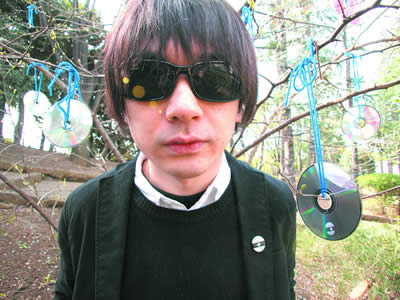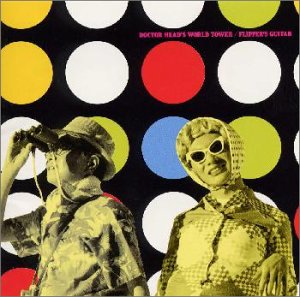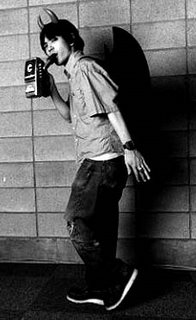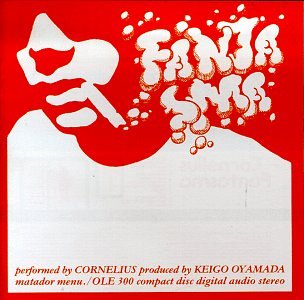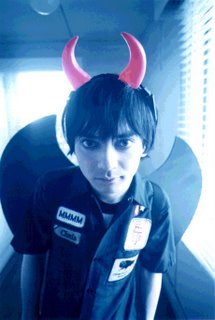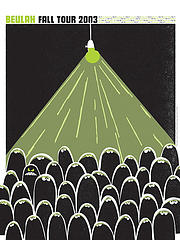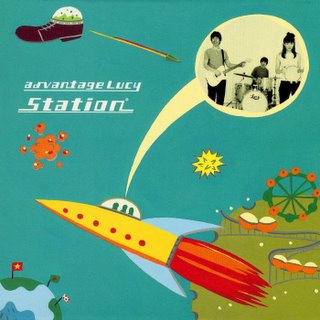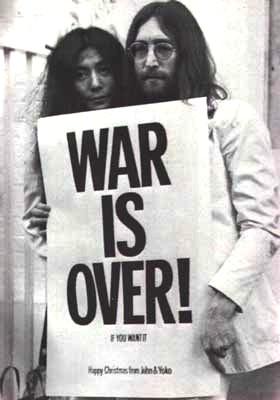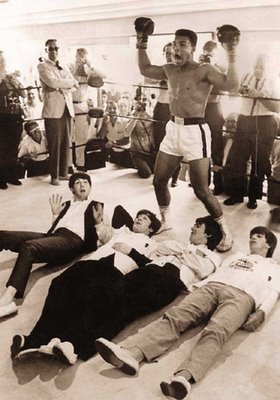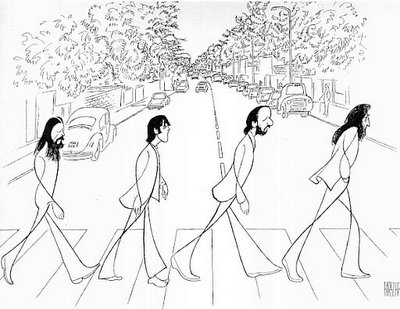Does anyone remember the Q101 Cage Match? Long before interactive media was a common phenomenon, back when Lance and Stoley were still on the air, Chicago's jammin' alternative radio station began pitting two songs against one another. Listeners would call in to vote for a winner, and the victor would move on to face another song the following week. The Cage Match has since inspired a host of similar programs, including the Pillow Fight on 94.7, the Zone.
 Today, we embark on an entirely new journey. Instead of facing Spacehog against Hagfish, we are forcing the Fab Four to fight amongst themselves. Instead of one mediocre alternative tune against another, we are throwing two of the all-time greatest pop albums into the ring. In one corner we have
Today, we embark on an entirely new journey. Instead of facing Spacehog against Hagfish, we are forcing the Fab Four to fight amongst themselves. Instead of one mediocre alternative tune against another, we are throwing two of the all-time greatest pop albums into the ring. In one corner we have Abbey Road
(1969) defended by our very first guest writer, Doug D'Agati. Douglas, we welcome you. In the other corner we have The Beatles
(aka the White Album, 1968) defended by WPNOB veteran and founder, Colin Bennett.
What follows is never polite, often personal, and yet always sophisticated. In sum, the two opponents have prepared their very strongest arguments, which will be presented here over the course of three days. During this time, we urge you to comment and share your own thoughts. By the end of the week, we hope the people will have declared a true winner. For now, let the match begin. Opening Statements: Abbey Road
Opening Statements: Abbey Road: There are many questions that deserve careful thought: Is there a god? What profession am I best suited for? What’s that growth on my toe? However, one question trumps all others, and deserves the thought and attention of every discerning mind: What is the Beatles’ greatest album,
Abbey Road or the White Album?
To begin, one must ask yet another question: What is an album? Some would assert that an album is a series of recordings issued together by an artist or group of artists. These people are jackasses and should be ignored. I would argue that a great album—much like a great novel—flows cohesively and logically from section to section. Just as a great novel guides us from chapter to chapter, a great album guides us from song to song in a deliberate fashion. Each song is connected to that which precedes and follows it. In short, a great album contains some sort of underlying structure. The White Album lacks such structure. I mean, what kind of copout ending to Disc 1 is “Julia”? Furthermore, what holds “Ob-La-Di, Ob-La-Da,” “Wild Honey Pie,” and the “Continuing Story of Bungalow Bill” together? Nothing. Skip-Skip-Skip. Play.
Abbey Road, on the other hand, flows effortlessly from start to finish. Beginning with the potent “Come Together” and culminating with the tender and muted, “Her Majesty,”
Abbey Road is an unparalleled musical odyssey, changing tone and speed in segments, rather than by song. The highlight of the album is the final 10-minute medley, which merges almost imperceptibly and includes such—dare I use the word—masterpieces as “Mean Mr. Mustard,” “Polythene Pam,” “She Came In Through the Bathroom Window,” “Golden Slumbers,” “Carry That Weight,” and “The End.” Conversely, if any kind of marriage exists between songs of the White Album, it is a J-Lo-esque marriage.
Abbey Road is one; the White Album is thirty.
Even when
Abbey Road does make the occasional abrupt transition, it is deliberate and provocative. For instance, from its start
Abbey Road slowly gains momentum, until climaxing with the hard-hitting and emphatic “I Want You (She’s So Heavy)”—only to be followed by the gentle strumming of Harrison’s “Here Comes the Sun.” To place the two most disparate tracks back-to-back is a bold move, but one that certainly paid off. Similarly, the deceptively titled “The End” begins with a raucous drum solo by Ringo—his only such solo—and then fades into the song’s final lines, which signal the album’s ostensible end. The perfect ending to a perfect album, you think. I guess I’ll pull up my pants, pry myself out of my lazyboy, saunter over to my CD player, and put in another disc, you decide…
Whoa, slow down there, chief!! The Beatles have one last surprise for you—but do pull up your pants anyway; it’s getting weird.
After a lengthy pause, the 17-second gem “Her Majesty” roars in, as if it were an appendix to the record. One word, two syllables: sublime. Okay, now it’s safe to pull up your pants and make your way to the CD player—though when you get there, you may want to hit “repeat.”
 Opening Statements: White Album
Opening Statements: White Album: To begin: there are almost as many “favorite” Beatles albums out there as there are people on this planet. How is this possible, you ask? The Beatles released some 20 albums and there are almost 6.5 billion people on the planet…surely there must be overlap? The answer is no. There isn’t. I don’t know how this works, it’s f-ing crazy. But I’ve never met anyone who agreed on a favorite Beatles album. Unfortunately, there are wrong choices to be made. This is not simply a matter of taste. I once met a man who said his favorite album was
Help!. I punched this man in the face. You crazy man, I said.
Help!, he yelled again. I pulled back for another punch, until I realized he was being mauled by a bear and was actually crying for help. Oh, I said. Later, in the hospital, he told me his favorite album was
Rubber Soul.
Anyway, enough preface. My point is just that
Abbey Road is not my opponent Douglas’s favorite album. He might think it is, and say it is, but he’s wrong. That poor little man hiding inside of him that I’ve seen with the aid of special drugs is screaming with all his heart “White Album! White Album!” Listen to that little man, Douglas. For he is your father.
First of all, I already know, thanks to other special drugs, what my opponent is going to say:
Abbey Road stands as a cohesive whole, a shining, multi-faceted blah blah blah blah. Fine.
Abbey Road has a “medley.” Big whoop. This is nothing extraordinary: Paul simply took a genre (classical symphony) and put his own unique pop stamp on it. And when you get right down to it, what’s so amazing about any of it? The fact that they rework musical “themes” throughout the record? Yeah, fifteen seconds of “You Never Give Me Your Money” in the middle of “Carry That Weight.” Wild.
If you’re looking for genre-warping, look no further than the two discs of
The Beatles, my friend. It’s a history of every genre that led to the development of pop music, rolled into one and then smoked: slave spirituals, country-western, blues, soul, folk, rock and roll of every stripe, even reggae. There are, of course, more. There are almost as many different genres present on this double-album as there are songs (thirty). It’s as if they set out to write a better version of every song written in the fifty-odd years preceding the album, and pretty much succeeded. And with the possible exception of Paul, it contains the best songs individually written by each Beatle: Ringo with “Don’t Pass Me By” (undisputedly better than
Abbey Road’s “Octopus’ Garden”), Harrison with “While My Guitar Gently Weeps,” and John with “Happiness is a Warm Gun” (more on this shortly). And in the case of Paul, I think you could even make a strong case for “Back in the U.S.S.R.,” although admittedly I’m partial to “Rocky Raccoon.”
This was a perfect-storm situation: each Beatle was simultaneously at the absolute pinnacle of his creative potential. The result is an album that seems schizophrenic only because a pantheon of gods was clawing at the insides of its creators’ minds. You say that the album lacks cohesion? Any sort of pattern? Well, good, I say. They weren’t sewing a pretty dress. They were writing songs. Remember: the basic unit of pop music isn’t the album. It is the song. Pop music was around long before the album, back when you could only fit three minutes of music onto one side of a record. And the Beatles were pop musicians…the best that ever lived, but pop musicians nonetheless. The
Abbey Road medley is a wonderful achievement, but it’s a gimmick…it just doesn’t stack up to the best works in the symphonic genre it is trying to imitate.
Finally, the atom bomb: “Happiness is a Warm Gun.” Hands down, no question, the BEST SONG EVER WRITTEN in the last 12 million-or-so years. I happen to know Douglas agrees with me on this point. This is sort of like having God on your soccer team.* Even if he were the only player, I still think your team would have a pretty good season. So, I say, if they had put out an album called the White Album that contained only this ONE song, it would still be in the running for best album ever recorded. It just so happens another twenty-nine great songs are grouped around it.
Quod Erat Demonstrandum.
*ED. ...or Michael Jordan on your basketball team.






